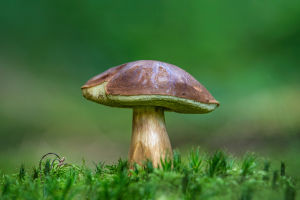
When it comes to tropical fruits, we often find ourselves drawn to the refreshing taste of pineapples. This vibrant fruit is not only delicious but also packed with health benefits, making it a perfect addition to any diet.
But there's more to this fruit than meets the eye. Let’s dive into the world of pineapples and explore why this superfruit is worth celebrating.
Where Pineapples Come From
Pineapples, scientifically known as Ananas comosus, are originally native to South America, specifically the region between southern Brazil and Paraguay. These juicy fruits belong to the Bromeliaceae family, which is part of the grass-like Poaceae order. Over centuries, pineapples have spread across the globe, starting from the indigenous cultures of South America, who cultivated the fruit long before it became a global favorite.
In the 17th century, Europeans were introduced to the pineapple after it was brought back from the Americas. By the 1820s, pineapples were being commercially grown in greenhouses and tropical regions around the world. Fast forward to today, and countries like Costa Rica, Brazil, and the Philippines are leading the production of this fruit, supplying nearly a third of the world’s pineapple demand.
Health Benefits of Pineapples
We all know that pineapples are sweet and refreshing, but they are also packed with nutrients. Rich in vitamin C, pineapples help boost the immune system, fight inflammation, and promote skin health. The fruit is also a great source of manganese, a mineral that plays a key role in bone health, metabolism, and maintaining a healthy nervous system.
What’s even more impressive is the presence of bromelain, a group of enzymes found in pineapples. Bromelain has been shown to have anti-inflammatory properties, making it an effective natural remedy for reducing swelling and promoting healing. Some studies even suggest that bromelain can help with digestion by breaking down proteins and improving gut health.
How Pineapples Are Grown
Pineapples thrive in tropical and subtropical climates, and they are typically grown on large plantations. The process of growing pineapples can take time, with plants requiring about 18 to 24 months to fully mature and produce fruit. These plants have long, spiky leaves, and the fruit itself grows on a central stem.
Harvesting pineapples involves carefully cutting the fruit from the plant while leaving the base intact to ensure it continues to grow. After harvesting, pineapples are often processed quickly to preserve their freshness and flavor. Pineapples are harvested throughout the year, but the peak season typically falls between March and July, depending on the region.
How to Choose and Enjoy Pineapples
When it comes to selecting the perfect pineapple, there are a few simple tips to keep in mind. First, look for a pineapple that feels heavy for its size, as this indicates it is full of juice. The color of the fruit should be a vibrant golden yellow, and the leaves at the top should be green and fresh-looking. Avoid pineapples with dark spots or overly soft areas, as these may indicate that the fruit is overripe.
Once you’ve selected your pineapple, there are numerous ways to enjoy it. Pineapple is delicious when eaten fresh, but it also pairs perfectly with other fruits in smoothies, fruit salads, or even savory dishes like grilled meats and seafood. Pineapple can also be used in cooking to add a touch of sweetness to stir-fries or desserts. For those who prefer a more tropical twist, you can even make pineapple juice or freeze it into refreshing popsicles.
Fun Facts About Pineapples
Pineapples have long been considered a symbol of hospitality and warmth. In fact, during the 18th century, European nobles would often display pineapples as a sign of wealth and generosity. This tradition carried over to the United States, where the pineapple became a popular motif in architecture, furniture, and even clothing. Today, you can still find pineapples featured in decorations, especially in tropical resorts and beach destinations.
Did you know that pineapples are technically not just one fruit, but a group of berries that have fused together? This unique characteristic gives pineapples their distinct shape and texture, making them instantly recognizable.
Why Pineapples Are Worth Adding to Your Diet
Pineapples are not just a delicious fruit; they are also packed with nutrients and health benefits. They bring a refreshing burst of tropical flavor to any meal. When you pick up a pineapple next time, take a moment to appreciate its journey from South America to your table and savor all the benefits it brings.
We hope this journey through the world of pineapples has sparked your curiosity. Grab a pineapple and discover how this superfruit can elevate your meals and boost your health. Share with us your favorite way to enjoy pineapple – we’d love to hear how you incorporate this tasty treat into your day!
Pineapple Power Boost Your Circulation
Video by Medicina y Bienestar


